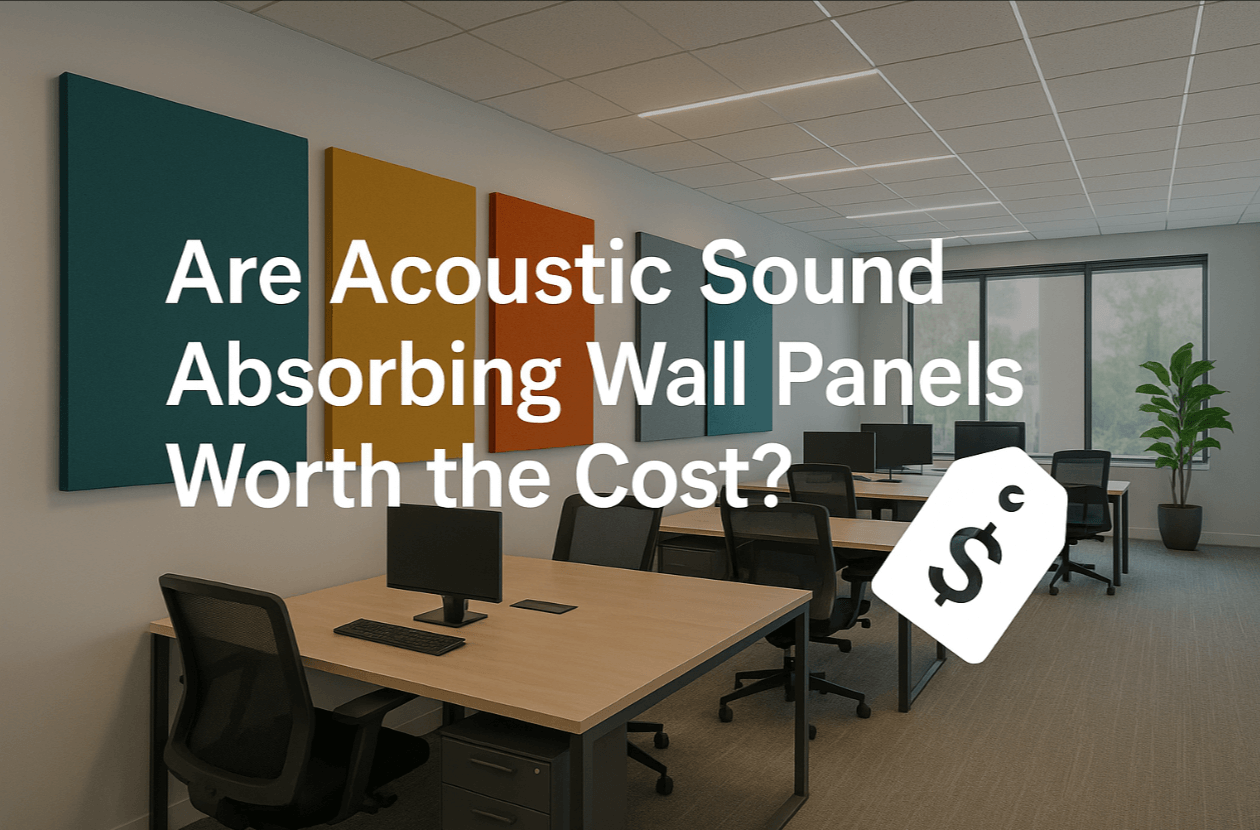Are Acoustic Sound Absorbing Wall Panels Worth the Cost?
Echo-laden rooms drain focus, muddle conversations, and make recordings unusable. Before you rush to cover every wall, it’s smart to ask the money question: are acoustic sound absorbing wall panels worth the cost? This article breaks down the economics—showing where the investment pays back in performance, comfort, and even revenue. As a factory-direct wholesaler, Wellco Wholesale supports trade and retail buyers with bulk pricing and logistics that can trim project expenses without sacrificing quality.

What Are Acoustic Sound Absorbing Wall Panels & Who Needs Them?
The Science of Absorption: How Porous Cores Convert Sound to Heat
At their core, acoustic sound absorbing wall panels rely on mineral wool, PET fiber, or foam arranged in a porous matrix. When sound waves enter, friction turns kinetic energy into a trace amount of heat, cutting reverberation times by up to 60 %.
Ideal Applications: Studios, Offices, Classrooms, Hospitality, Home Theaters
Any space where speech clarity, music fidelity, or guest experience matter benefits. Open-plan offices and call centers rank highest because even a 5 dB drop can halve perceived loudness.
Key Performance Metrics (NRC, STC) and What Numbers Really Mean
-
NRC (Noise Reduction Coefficient) gauges how much sound a panel absorbs across key frequencies. A rating of 0.85 means it traps 85 % of incident sound.
-
STC (Sound Transmission Class)—more common in walls—shows how well construction blocks airborne noise. For panels, focus on NRC first, then choose complementary barriers if isolation is critical.
Breaking Down the True Cost of Ownership
Up-Front Expenses: Material Grades, Customization, Installation Labor
Prices span $3–$12 / ft². Higher-density mineral wool panels cost more but deliver better low-frequency absorption. Custom fabric wraps, printed graphics, and fire-rated cores add 10–30 % each. Labor averages $2–$4 / ft² for mechanical fasteners or Z-clips.
Hidden & Lifecycle Costs: Maintenance, Durability, Replacement Cycles
Quality panels last 10–25 years. Cheap polyurethane foam oxidizes, losing performance within five. Budget for periodic vacuuming and fabric spot-cleaning (<$0.10 / ft² annually).
DIY vs. Professional Supply Chain
Sourcing directly through Wellco Wholesale often cuts per-panel cost 15 – 25 % by consolidating freight and bypassing retail mark-ups. Their mixed-item pallets let small studios reach bulk pricing tiers without overbuying, shrinking storage and cash-flow strain.
Measuring the Payoff: Benefits That Offset the Spend
Hard Numbers: Productivity Gains
A meta-analysis by the Center for the Built Environment found a 10–15 dB noise reduction correlated with 8–20 % productivity improvement in open offices—worth about $3,000 per employee per year at U.S. salary averages. One Boston law firm reported a 27 % drop in transcription errors after installing acoustic sound absorbing wall panels, saving $18k in rework costs.
Soft Returns: Wellness, Brand Perception, Visitor Experience
Reduced noise lowers cortisol, curbing fatigue and absenteeism. For hospitality, TripAdvisor reviews mentioning “quiet rooms” score 12 % higher on average, translating to repeat bookings.
Case Snapshot (anonymized)
A 500 m² customer-support center retrofitted 1,200 Class A polyester panels. Capital outlay: $34 k. In the first year, call-handling time fell 9 % and error callbacks 15 %, delivering a documented $42 k annual saving—ROI in under ten months.
Maximizing Value When Selecting Panels
Matching Panel Type & NRC Rating to Room Size and Noise Profile
-
Small podcast booth: 2-inch PET panels (NRC 0.95) on 40 % of surfaces.
-
Choir rehearsal hall: 4-inch mineral wool clouds and slot diffusers for balanced mids and lows.
Balancing Aesthetics, Fire Ratings, and Budget Constraints
Choose ASTM-E84 Class A fabrics for public venues; many now come in designer textures that rival premium upholstery. Perforated wood veneered panels add warmth but cost 30 % more—reserve for front-of-house areas where visual impact justifies spend.
Sourcing Tips
-
Request lab test reports, not brochure claims.
-
Order a sample kit and conduct a clap test in your space.
-
Lock in lead times (typically 2–4 weeks) and combine your order with other supplies—garden stakes, weed barrier, or hotel linens—through Wellco Wholesale to maximize pallet efficiency.
Expert & User Insights
Installer Quote
“Most overruns happen when clients change panel layouts mid-install. That can add 25 % to labor,” notes Marcos Reyes, a licensed acoustic contractor. Sketch scale drawings first and pre-label panels.
First-Hand Experience
Home studio owner Aliyah Green shared SPL graphs showing peak reverberation at 500 Hz drop from 0.9 s to 0.28 s after adding eight acoustic sound absorbing wall panels—allowing her to mix at 70 dB without masking details.
Industry Benchmarks
The World Health Organization recommends <35 dB(A) for classrooms. OSHA sets an 85 dB 8-hour average for occupational safety, but speech intelligibility declines sharply above 50 dB; panels help stay in the comfort zone.
Conclusion
When total cost meets measurable acoustic, health, and branding gains, acoustic sound absorbing wall panels often pay for themselves within a year—sometimes faster with bulk purchasing. Evaluate performance specs, installation strategy, and supplier reliability. Wellco Wholesale can price, kit, and ship panels alongside complementary supplies, streamlining your procurement. Ready to calculate your ROI? Request a custom quote today.
Frequently Asked Questions
Q1: How many panels do I need for an office conference room?
Start with 20–30 % wall coverage. Measure room volume and aim for a mid-frequency RT60 (reverberation time) of 0.4–0.6 s, then fine-tune with additional panels if needed.
Q2: Can the panels be customized with company branding?
Yes. Dye-sublimated fabric prints or magnetic overlay skins allow high-resolution logos without degrading NRC, adding roughly $1.50 / ft².
Q3: Are panels safe in areas with strict fire codes?
Choose cores and fabrics rated ASTM-E84 Class A or EN 13501-1 B-s1-d0. Certificates should accompany each shipment.
Q4: What is the typical lead time for bulk orders?
Standard colors ship in 7–10 days. Custom colors or printed wraps may take 3–4 weeks; combining products through Wellco Wholesale helps consolidate freight windows.
Q5: How do I clean and maintain the panels?
Vacuum monthly with a soft brush attachment. For stains, dab with a mild detergent solution; avoid soaking to maintain adhesive integrity.
